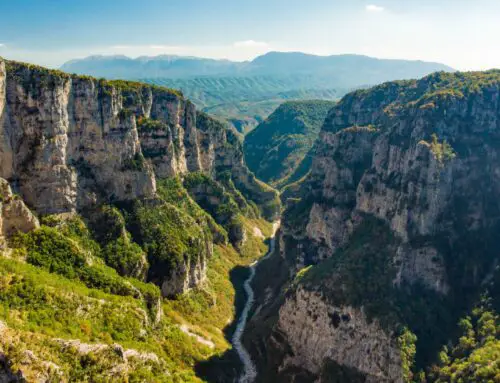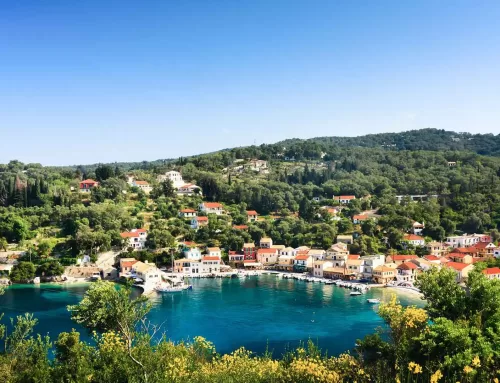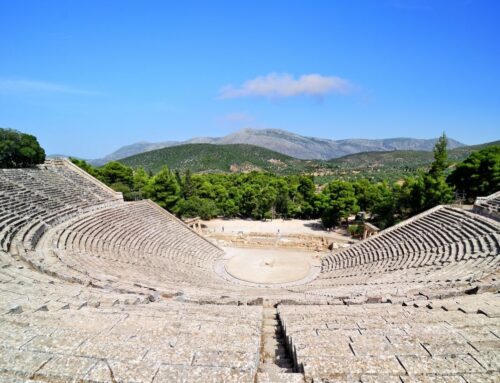
How To Explore The Lost Ancient Rivers Of Athens
How To Explore The Lost Ancient Rivers Of Athens

☞ Table of Contents:
Under the city of Athens lies a secret that even most locals don’t know about. Here we unearth it. While the city of Athens has the culture, the history and the ancient ruins, you might notice that it’s missing something. Something that defines almost every European city. A river. But we’ll let you in on a secret. The river’s there, you just can’t see it.
☞ Related: 2 Days In Athens – The Way A Local Would Do It
The Rivers of Athens
Originating from the mountains north of Athens the river Kifissos flows right under the western part of the city and into the Saronic gulf. The river Illissos does the same, although it originates in the mountains northwest of Athens and flows through the heart of the city to join with the river Eridanos. While Kifissos and Illissos are the major rivers of Athens, Eridnos is the smallest of the three and springs from the base of Lybacettus hill.
☞ Related: If you want to know what it’s like to climb the tallest mountain in Greece click here
On its underground travels the Illissos river passes beneath many focal points of the city, such as the Panathenaic stadium, the Temple of Olympian Zeus and the Church of Agia Fotini Ilissos in the suburb of Mets and under the National Garden of Athens. Between the church and the Temple of Olympian Zeus is one of the few places you can see the river. Although it doesn’t look much like a river anymore, only the lush greenery that grows in its dry channel hints at its existence. Eventually it converges with Eridanos in the suburb of Kallithea southwest of the city and continues on into the sea.
☞ Related: The Temple of Olympian Zeus is a must see, check out some other important ancient sites in Athens here
In Antiquity
Long before the Illissos river began to be built over it was much a part of Athenian society in both antiquity and the middle ages. Being the most central to the city it played its part as both a place of ritual and leisure. The famous Greek philosopher Socrates is quoted to have sat beside its waters and had discussions with his dedicated followers, ‘Let us turn aside here and go along the Ilissos; then we can sit down quietly wherever we please’. While due to the hot and dry climatic conditions of Athens the river was not always flowing, after periods of rain it carried the floodwater away swiftly to the sea.
Originally Eridanos received a large amount of flooding from the surrounding hills, such as the Acropolis, however this was remedied in the 6th century BC when two canals were built, setting the river underground. These canals were discovered in excavations in 1960.
Taking It Underground
While the Eridanos was submerged in the 6th century the Illissos was more recent. The covering of the Illissos river began to take place in the 19th century for a few purposes. Firstly, it allowed for the expansion of the city of Athens, offering more surfaces in which things could be built. With an ever increasing population an increase in habitable areas was welcomed and so the river begun to be taken underground.
Secondly, from the 19th century until the early 1900s the river’s banks had begun to be used as a source of material for the building of roads within the city. This exploitation degraded the quality of both the water and the river’s capacity to hold flood water, so its ability to protect the city was significantly reduced. Aside from this it was also contaminated with sewage and waste, and hence in desperate need of sanitisation.
The Lost Rivers Today
Today the rivers Kifissos, Illissos and Eradinos that once ran openly through the city of Athens are hidden from site, instead they flow in concreted channels beneath the city’s surface. Some of the remains of the original Eradinos river channel can be seen preserved in the Syntagma square metro station, which was found when works were being undertaken on the metro in 1992. The Kifissos today lies is the metropolitan area of Athens, with some parts lying directly under the highway, so you might have unknowingly driven over it. On a trip to the Temple of Zeus you may even pass by the open channel of the Illissos. If you look closely you might see some critters hiding in the foliage of its banks!
Athens is renowned for its hot and dry summers, which means that green regions within the city are few and far between, but some of the lush sanctuaries that do exist today, such as the National Gardens, can be attributed to these underground rivers thats water is used to nourish these spots from deep below.
- Did you know about the lost ancient rivers of Athens? You may have been to some of the places that these rivers run under. Have you been to the Panathenaic Stadium or the Temple of Zeus?
*Disclaimer: This page might include affiliate links. If you decide to book something through one of them, I might get a little bonus, but it won't cost you anything extra.*

























